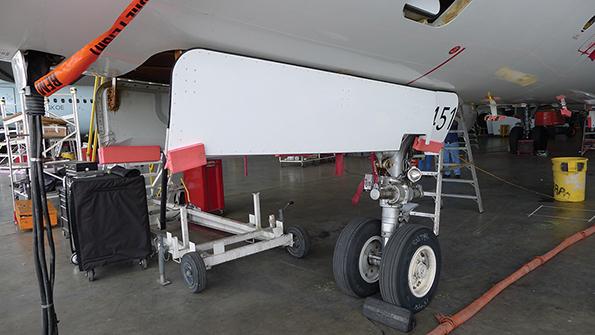
The new FAA reauthorization bill will affect U.S.-certified repair stations. The only question is, how much?
It is FAA reauthorization season in Washington, and if the initial proposals from the U.S. House of Representatives and Senate are any indication, changes are coming for the aviation maintenance world.
In the U.S., authorization and reauthorization bills give de facto marching orders to federal agencies. While they have notional budgets, spending still must be approved every year. The real meat of any reauthorization bill is the set of specific requirements given to an agency, ranging from internal reviews to entirely new rules with deadlines.
The current FAA bill expires Sept. 30—the end of the current fiscal year. It covered five years, which helped create stability at the FAA—although on the safety side, the two fatal Boeing 737 MAX accidents in 2018 and 2019 quickly disrupted that stability, leading Congress to issue a series of mandatory changes in a 2020 spending bill. Both the House and Senate are aiming for another five-year bill.
Proposals unveiled in June included myriad items that would, if made into law, affect the aviation maintenance world.
Both bills would mandate annual, unannounced inspections of FAA-certified repair stations outside the U.S., new requirements for some of their employees and new reporting requirements by airlines that use them.
Similar proposals have been floated several times on the House side with strong backing by labor unions that generally oppose outsourcing maintenance work. This year is the first that a similar push has gained traction in the Senate. Industry groups, led by the Aeronautical Repair Station Association (ARSA), oppose such moves, citing added burdens to affected shops without evidence of any potential safety benefits.
“Given the maintenance industry’s safety record and the scrutiny foreign repair stations already receive from the FAA, airline customers and third-party auditors, ARSA continues to believe that the foreign repair station language is a solution in search of a problem,” the association said.
Other notable items in the draft bills include a House call to task the FAA Aviation Rulemaking Advisory Committee (ARAC) with reviewing instructions for continued airworthiness (ICA) regulations and guidance. Among the specific tasks would be evaluating ICA availability “as needed, for maintenance activities.”
ICA availability has long been an issue between manufacturers asserting that their proprietary information should be protected—or at least available only at a premium—and independent repair stations arguing that the regulations stipulate reasonable access to manuals and data for the work they perform. An ARAC-led working group would likely have representation from both sides.
The House bill would also require the FAA to clarify via new or updated guidance when a major alteration requires a supplemental type certificate. It also calls on the Transportation Department’s inspector general to audit FAA flight standards and certification’s “interpretation . . . and application of policies, orders, guidance and regulations.” This targets not just how the FAA applies its requirements, but also how consistently it is done by different FAA offices around the country—another longstanding issue with many certificate holders that deal with multiple FAA regional offices.
While Congress is pushing to have a new bill in place by Oct. 1, the more likely outcome is one or several extensions of the current bill while lawmakers hash out details of the new one amid other, non-aviation priorities.
Speaking of handling priorities, the FAA finalized its flight deck secondary barrier final rule (Inside MRO November 2022, p. MRO 6), leaning heavily on congressional language mandating the requirement and rejecting calls to change its scope.
Published June 26 and effective Aug. 26, the rule calls for all new passenger aircraft entering Part 121 service to have installed physical secondary barriers (IPSB) starting Aug. 25, 2025.
The rule affects only newly delivered aircraft. The FAA rejected union-led calls to broaden the rule to require retrofits of the existing fleet, as well as requests from Airlines for America and United Airlines to limit it to newly certified aircraft only.
“The legislation was explicit in that it mandates the FAA to require installation of IPSB on each new aircraft,” the FAA said, referring to Section 336 of the 2018 FAA reauthorization act, which mandated the added safety devices.
Aircraft manufacturers led a call for a 36-month compliance period, citing engineering challenges and supply chain issues as potential hurdles to meeting a 24-month deadline. The FAA kept its proposed 24-month window, however, noting that reinforced flight deck doors mandated after the Sept. 11, 2001 terrorist attacks were readied within two years at a time when industry had less understanding of the issue. The agency also pointed out that carriers such as Delta Air Lines and United have already installed IPSBs on parts of their fleets.
In addition, the agency determined that requiring foreign carriers operating to the U.S. to comply was both beyond the legislation’s scope and a potential issue with its international counterparts. “At this time, neither other civil aviation authorities nor [the International Civil Aviation Organization] have identified secondary barriers as a security priority,” the FAA said in the rule’s preamble. “Therefore, extending the IPSB requirement to foreign air carriers would be without the agreement of other civil aviation authorities.”





